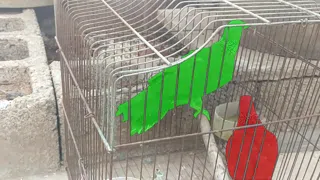Occluded Video Instance Segmentation: A Benchmark
Can our video understanding systems perceive objects when a heavy occlusion exists in a scene? To answer this question, we collect a large-scale dataset called OVIS for occluded video instance segmentation, that is, to simultaneously detect, segment, and track instances in occluded scenes. OVIS consists of 296k high-quality instance masks from 25 semantic categories, where object occlusions usually occur. While our human vision systems can understand those occluded instances by contextual reasoning and association, our experiments suggest that current video understanding systems cannot. On the OVIS dataset, the highest AP achieved by state-of-the-art algorithms is only 16.3, which reveals that we are still at a nascent stage for understanding objects, instances, and videos in a real-world scenario. We also present a simple plug-and-play module that performs temporal feature calibration to complement missing object cues caused by occlusion. Built upon MaskTrack R-CNN and SipMask, we obtain a remarkable AP improvement on the OVIS dataset. The OVIS dataset and project code are available at http://songbai.site/ovis .
PDF Abstract







 OVIS
OVIS
 MS COCO
MS COCO
 YouTube-VIS 2019
YouTube-VIS 2019
